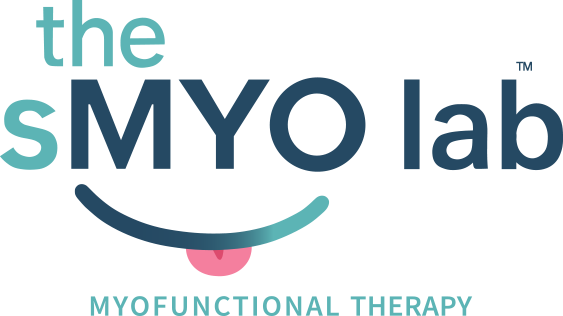Transform Your Health: The Life-Changing Benefits of Orofacial Myofunctional Therapy
Have you ever wondered why some people struggle with persistent mouth breathing, sleep issues, or speech difficulties despite trying various treatments? The answer might lie in something you've probably never heard of: orofacial myofunctional disorders. These conditions affect the muscles and functions of your face and mouth, influencing everything from how you breathe to how well you sleep.
Orofacial Myofunctional Therapy (OMT) offers a specialized approach to addressing these challenges through targeted exercises and techniques. This evidence-based treatment method focuses on retraining the muscles of your face, mouth, and throat to function properly, leading to significant improvements in breathing, sleep quality, oral development, and swallowing abilities.
Understanding OMT and its benefits could be the key to unlocking better health for you or your loved ones. Let's explore how this innovative therapy works and why it's gaining recognition among healthcare professionals worldwide.
Understanding Orofacial Myofunctional Disorders
An Orofacial Myofunctional Disorder (OMD) occurs when the muscles and functions of the face and mouth don't work together correctly. These disorders can affect anyone at any age, though they're often identified during childhood development.
OMDs typically involve improper tongue posture, incorrect swallowing patterns, or dysfunctional breathing habits. When your tongue doesn't rest in the right position against the roof of your mouth, or when you consistently breathe through your mouth instead of your nose, it can create a cascade of health issues that extend far beyond your oral cavity.
The causes of OMDs vary widely. Some people develop these patterns due to prolonged thumb sucking, extended pacifier use, or chronic nasal congestion. Others may have structural issues like tongue-tie or enlarged tonsils that contribute to dysfunctional patterns. Regardless of the cause, the good news is that OMDs are highly treatable with proper intervention.
Recognizing the Signs and Symptoms
Identifying OMD can be challenging because symptoms often overlap with other conditions. However, several key indicators suggest the presence of an orofacial myofunctional disorder.
Physical signs include an open mouth posture during rest, visible tongue protrusion during swallowing, and forward head posture. You might notice frequent mouth breathing, especially during sleep, or observe that the tongue pushes against the teeth when swallowing.
Sleep-related symptoms often accompany OMDs. These include snoring, restless sleep, frequent waking, and daytime fatigue. Children with OMDs may experience bedwetting, difficulty concentrating, or behavioral issues that stem from poor sleep quality.
Speech and eating challenges also commonly occur. Difficulty with certain sounds, messy eating habits, or trouble chewing and swallowing foods of various textures can all indicate underlying myofunctional issues.
The Remarkable Benefits of Orofacial Myofunctional Therapy
Improved Breathing Patterns
One of the most significant benefits of OMT is the improvement in breathing patterns. The therapy teaches proper nasal breathing techniques and helps establish correct tongue posture, which naturally opens the airway. When your tongue rests properly against the roof of your mouth, it creates optimal space for airflow through your nasal passages.
Improved breathing has far-reaching effects on your overall health. Nasal breathing filters, warms, and humidifies the air you breathe, while also producing nitric oxide, which helps with oxygen absorption and circulation. Patients often report feeling more energetic and alert once they establish proper breathing patterns.
Enhanced Sleep Quality
OMT can dramatically improve sleep quality by addressing the root causes of sleep-disordered breathing. When muscles function properly and airways remain open, sleep becomes more restful and restorative.
Many patients experience reduced snoring, fewer sleep interruptions, and deeper sleep cycles after completing OMT. Children often show improved behavior and academic performance as their sleep quality increases. Adults frequently report feeling more refreshed upon waking and having sustained energy throughout the day.
Better Oral and Facial Development
Proper muscle function significantly influences oral and facial development, particularly in growing children. OMT helps ensure that the tongue, lips, and facial muscles work together to promote healthy jaw growth and tooth alignment.
When the tongue consistently rests against the roof of the mouth, it provides natural expansion for the upper jaw, creating adequate space for teeth to erupt properly. This can reduce the need for extensive orthodontic treatment or help maintain orthodontic results long-term.
The therapy also promotes balanced facial development, potentially improving facial symmetry and creating more defined facial features as muscles strengthen and function correctly.
Easier Swallowing and Speech
OMT addresses dysfunctional swallowing patterns and can significantly improve speech clarity. The therapy teaches proper tongue placement and movement patterns for both swallowing and speech production.
Patients often notice clearer articulation of sounds, particularly those involving tongue placement like "s," "z," "t," and "d" sounds. Swallowing becomes more efficient and less noticeable, reducing the social awkwardness some people experience with loud or visible swallowing patterns.
Who Benefits from Orofacial Myofunctional Therapy?
OMT can benefit individuals across all age groups, though the approach may vary depending on age and specific needs. Children as young as four can begin certain aspects of therapy, while adults can achieve significant improvements regardless of how long they've had dysfunctional patterns.
Children with thumb sucking habits, frequent ear infections, or developmental delays often see remarkable improvements with OMT. The therapy can also complement orthodontic treatment, helping to maintain results and prevent relapse.
Adults dealing with sleep issues, TMJ disorders, or speech difficulties frequently find relief through OMT. The therapy is particularly beneficial for those who have tried other treatments without success, as it addresses underlying muscle dysfunction rather than just symptoms.
Individuals preparing for or recovering from oral surgery, orthodontic treatment, or sleep apnea therapy can also benefit significantly from OMT as part of their comprehensive treatment plan.
What to Expect During OMT Sessions
OMT sessions typically begin with a comprehensive evaluation to assess muscle function, breathing patterns, and overall oral health. Your therapist will identify specific dysfunctional patterns and develop a customized treatment plan tailored to your needs.
Treatment usually involves a series of exercises designed to strengthen and coordinate the muscles of your face, mouth, and throat. These exercises might include tongue strengthening activities, breathing techniques, and coordination drills that retrain muscle memory.
Sessions are typically scheduled weekly or biweekly, with most treatment plans lasting several months. Progress is monitored regularly, and exercises are adjusted as improvements occur. Home practice is essential for success, but the exercises are generally simple and can be easily incorporated into daily routines.
Finding Qualified OMT Professionals
Locating a qualified OMT therapist like Nancy Tran, RDH requires some research, as this specialty isn't available everywhere. Look for professionals who have completed specialized training in orofacial myofunctional therapy through recognized organizations.
Many OMT therapists are dental hygienists, speech-language pathologists, or other healthcare professionals who have pursued additional certification. The International Association of Orofacial Myology maintains directories of certified practitioners.
For those in the San Diego area, the sMYO lab in San Diego offers specialized orofacial myofunctional therapy services with experienced professionals who understand the comprehensive approach needed for successful treatment outcomes.
Investing in Your Long-Term Health and Wellness
Orofacial Myofunctional Therapy represents a powerful, non-invasive approach to addressing fundamental issues that affect breathing, sleep, development, and overall quality of life. The benefits extend far beyond the mouth and face, influencing everything from energy levels to cognitive function.
If you recognize signs of orofacial myofunctional disorders in yourself or a family member, consider consulting with a qualified OMT professional. Early intervention can prevent complications and lead to more dramatic improvements, but it's never too late to benefit from this transformative therapy.
Remember, your oral health is intimately connected to your overall wellness. Investing in proper muscle function through OMT could be one of the most important steps you take toward optimal health and vitality.


